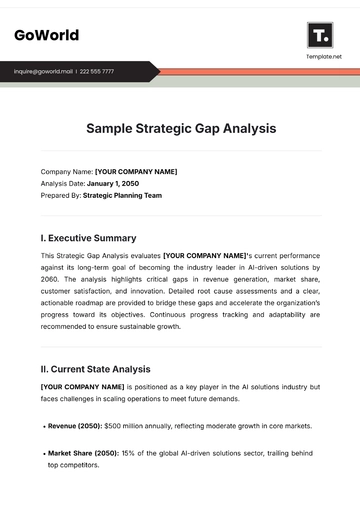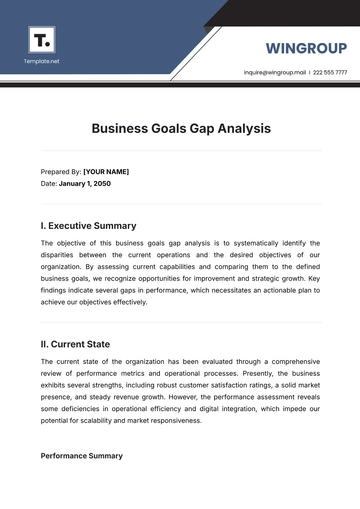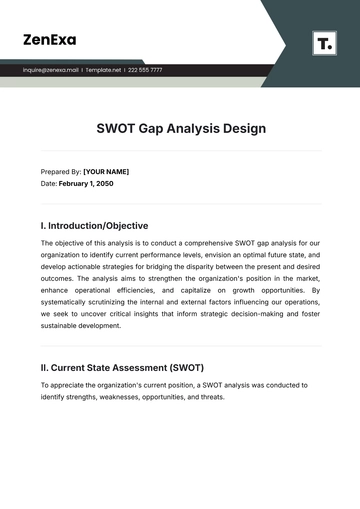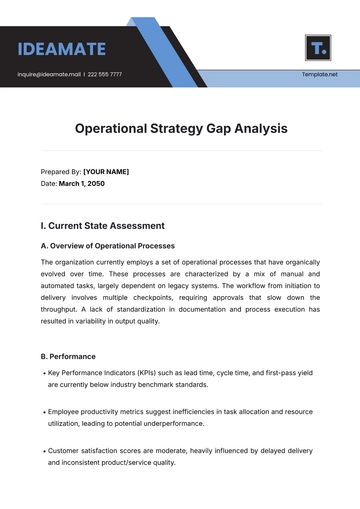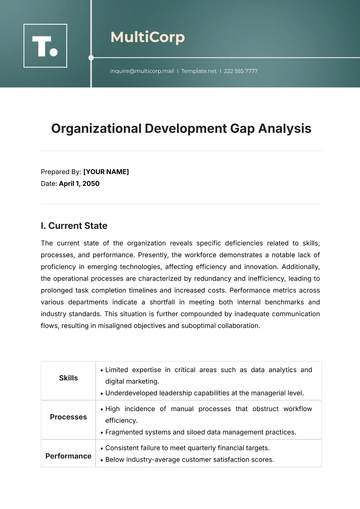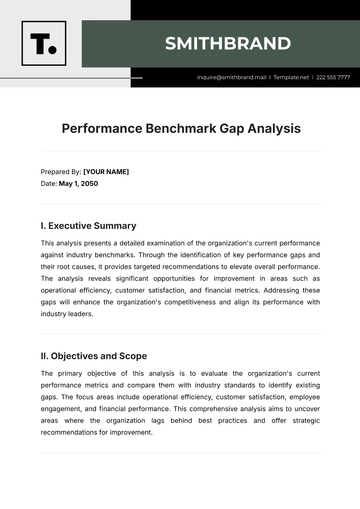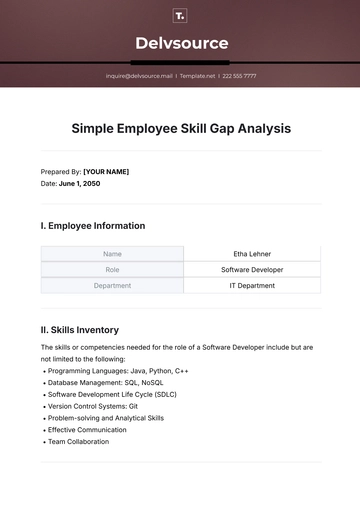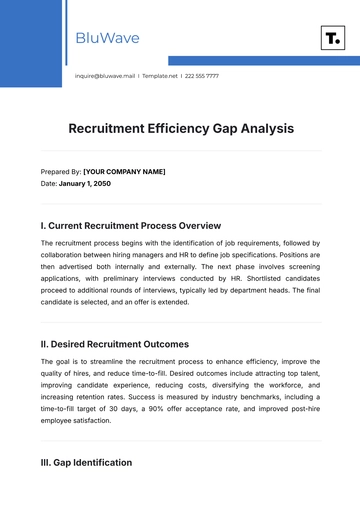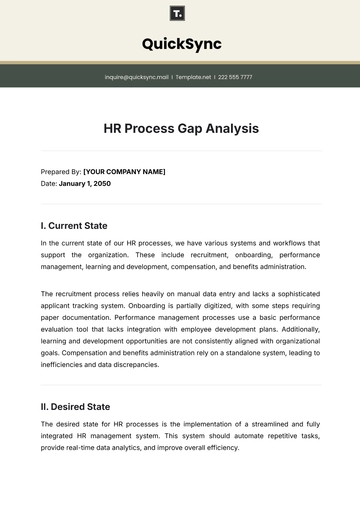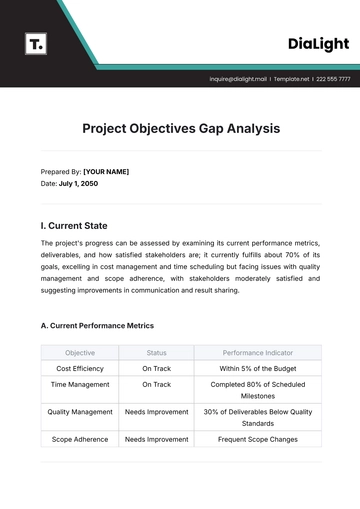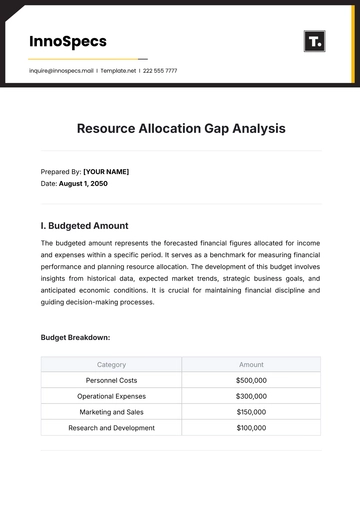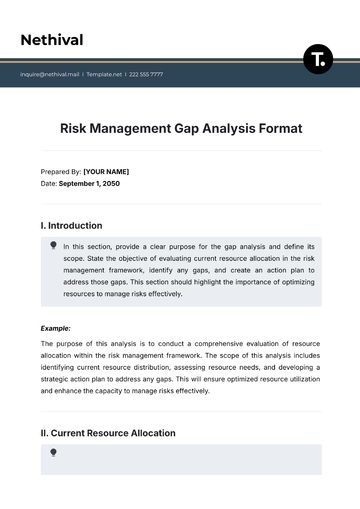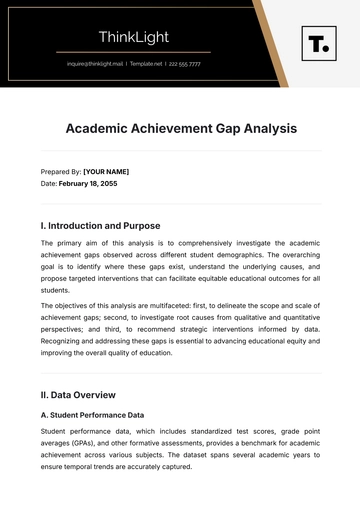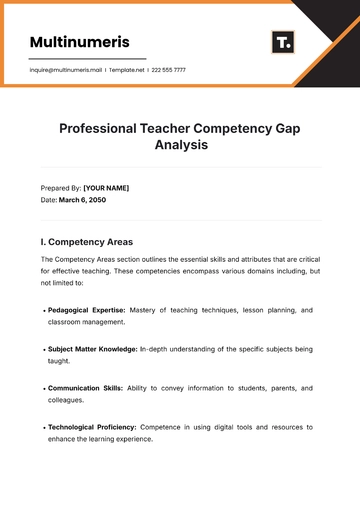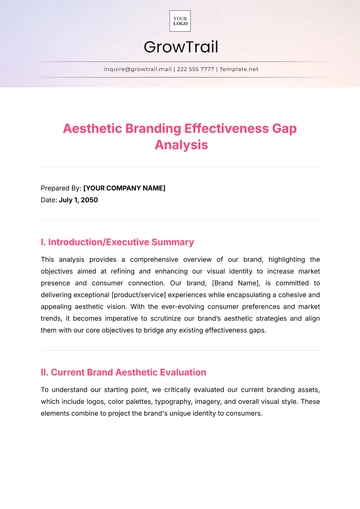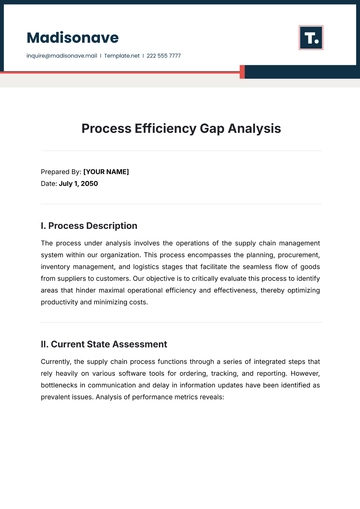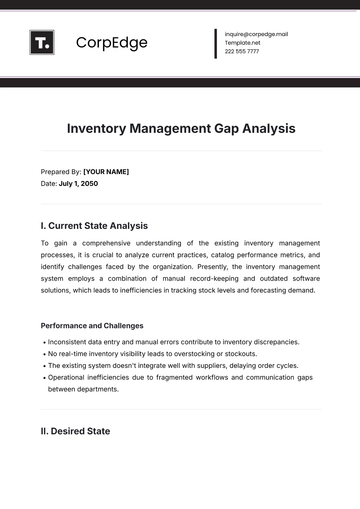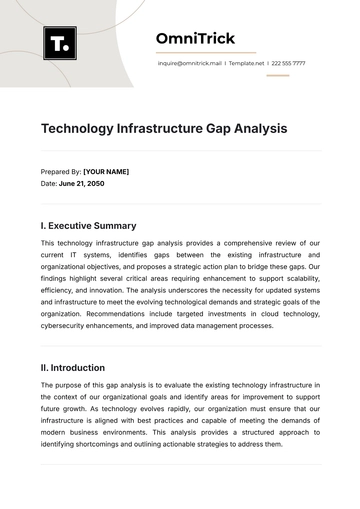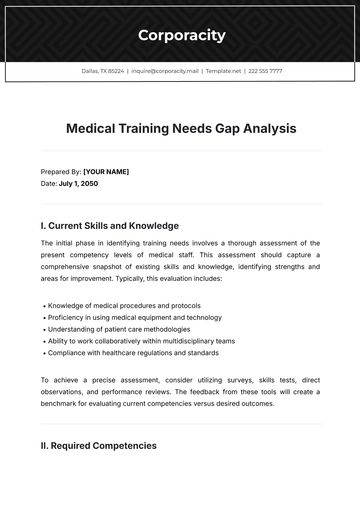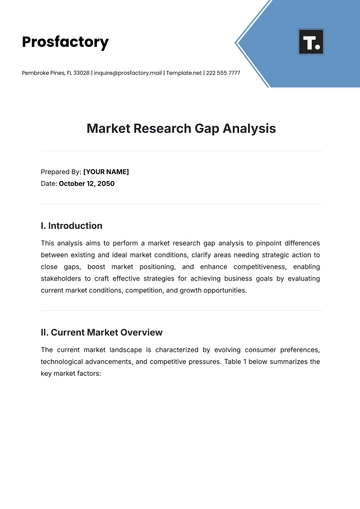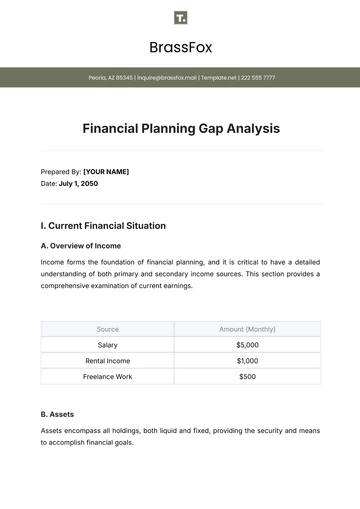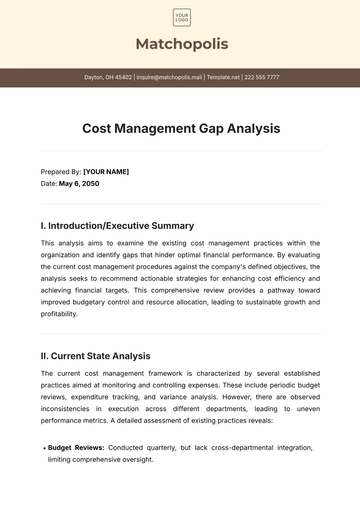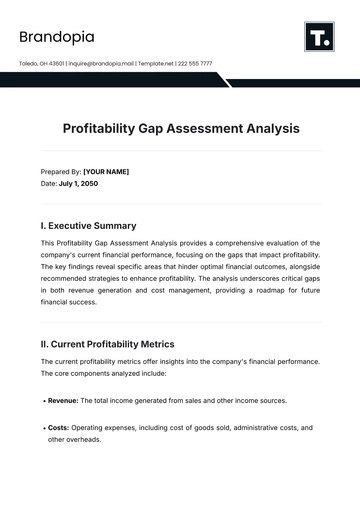Free In-depth Post-training Analysis HR
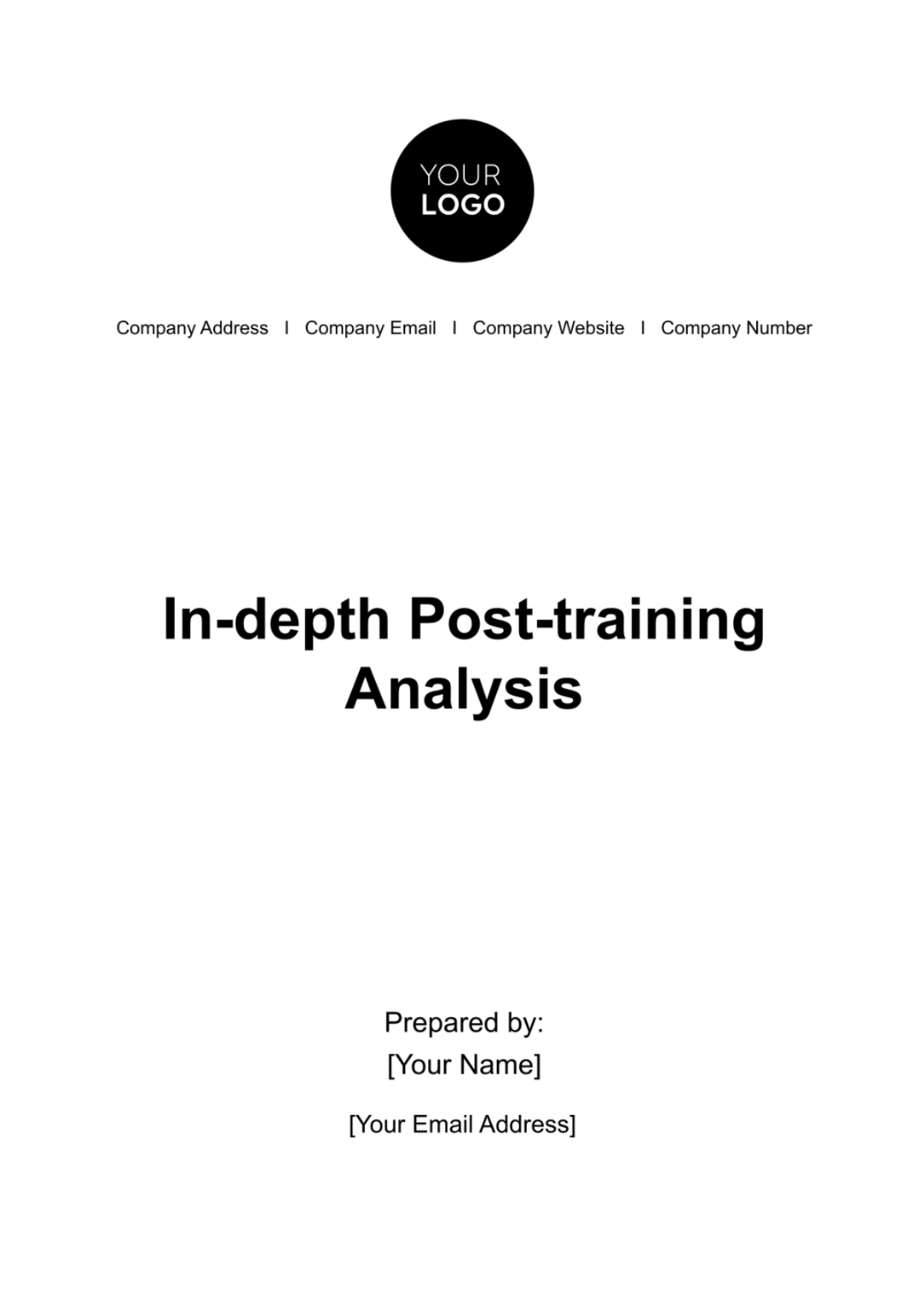
TABLE OF CONTENTS
EXECUTIVE SUMMARY...................................................................................................3
TRAINING OBJECTIVES AND SCOPE............................................................................3
PARTICIPANT OVERVIEW...............................................................................................4
TRAINING CONTENT EVALUATION..............................................................................5
TRAINER ASSESSMENT.................................................................................................6
POST-TRAINING PERFORMANCE ANALYSIS...............................................................7
RESOURCE EFFICIENCY................................................................................................8
PARTICIPANT SATISFACTION AND AREAS FOR IMPROVEMENT...............................8
RECOMMENDATIONS AND ACTION PLAN..................................................................8
CONCLUSION.................................................................................................................9
Document Version: 1.0
Year: 2055
EXECUTIVE SUMMARY
Introduction
This Post-Training Analysis report presents an in-depth evaluation of the recent training program conducted by [Your Company Name] in 2055. The purpose of this analysis is to assess the program's effectiveness, identify areas of improvement, and determine its impact on employee performance and organizational goals.
Key Findings
Our analysis revealed several key findings:
● A majority of participants reported significant skill improvement, particularly in project management, communication, and problem-solving.
● The training content was well-received, with an average satisfaction rating of 4.5 out of 5.
● Trainer competence was generally high, contributing to effective knowledge transfer.
● However, some participants expressed concerns regarding the applicability of certain training modules to their specific roles.
Recommendations
Based on the findings, we propose the following recommendations:
● Tailor training content to align more closely with individual job roles by conducting pre-training assessments to identify specific skill gaps.
● Foster a culture of continuous learning by implementing regular follow-up sessions, workshops, and access to online resources to ensure the long-term retention and application of newly acquired skills.
● Provide additional support and resources for participants to apply their knowledge in the workplace effectively, such as mentorship programs and on-the-job training opportunities.
● Consider expanding training programs to address emerging industry trends and technologies, ensuring our workforce remains competitive in a rapidly evolving market.
TRAINING OBJECTIVES AND SCOPE
Training Goals
The primary goal of the recent training program was to enhance employees' leadership and communication abilities, aiming to improve team collaboration, project management, and conflict resolution skills. Additionally, we sought to enhance employee engagement and job satisfaction by addressing their professional development needs.
Training Scope
The training program encompassed a wide range of topics, including leadership development, effective communication, project management, and conflict resolution, to address the diverse needs of our workforce. Its scope extended across all departments and employee levels, promoting a cohesive and skilled workforce capable of contributing to the company's long-term success.
PARTICIPANT OVERVIEW
Participant Demographics
In order to gain a deeper understanding of the composition of our training participants, we have conducted a thorough analysis of participant demographics. The following table provides an overview of key demographic factors:
DEMOGRAPHIC FACTOR | DISTRIBUTION |
Job Roles | |
Management | 30% |
Sales & Marketing | 20% |
Technical | 25% |
Support | 25% |
Experience Levels | |
Entry-Level | 40% |
Mid-Level | 35% |
Senior-Level | 25% |
Department Distribution | |
HR | 15% |
Finance | 20% |
Operations | 35% |
Others | 30% |
This data assists in identifying whether the training program effectively reached the intended audience and if any specific groups may require more tailored training in the future.
Attendance and Participation
Attendance and participation rates provide insights into the level of engagement and commitment of participants. The following table illustrates attendance and participation metrics:
TRAINING SESSION | ATTENDANCE RATE (%) | PARTICIPATION LEVEL (%) |
Session 1 | 95% | 90% |
Session 2 | 92% | 88% |
Session 3 | 94% | 91% |
Understanding attendance and participation patterns helps us gauge the effectiveness of our training communication and scheduling.
TRAINING CONTENT EVALUATION
Content Relevance
The relevance of training content to participants' job roles is a critical factor in evaluating training effectiveness. Based on feedback and analysis, we have identified the following aspects of content relevance:
TRAINING MODULE | RELEVANCE RATING (1-10) | PARTICIPANT COMMENTS |
Module 1: Leadership | 9 | "Highly relevant to my role." |
Module 2: Sales Techniques | 8 | "Could be more tailored to our industry." |
Module 3: Technical Skills | 9 | "Relevant and practical." |
Learning Effectiveness
Learning effectiveness measures the ability of the training content to achieve its stated learning objectives. We have analyzed the impact of training content through the following methods:
LEARNING OBJECTIVE | ASSESSMENT METHOD | ACHIEVEMENT RATE (%) |
Objective 1: Leadership Skills | Pre and Post-assessment | 85% |
Objective 2: Sales Techniques | Skill Application Tests | 78% |
Objective 3: Technical Skills | Participant Feedback | 90% |
Assessing learning effectiveness helps us identify areas where content may need improvement and areas where it excelled.
Materials and Resources
Evaluating the availability and usefulness of training materials and resources is crucial for enhancing the training experience. The following table summarizes the assessment of materials and resources:
TRAINING RESOURCE | AVAILABILITY (YES/NO) | USEFULNESS RATING (1-10) |
Presentation Slides | Yes | 9 |
Handouts/Workbooks | Yes | 8 |
Online Resources | Yes | 9 |
Simulations/Activities | No | - |
TRAINER ASSESSMENT
Trainer Competence
Assessing trainer competence is crucial for ensuring the effectiveness of the training program. We have evaluated the trainers based on their qualifications and expertise relevant to the training content. The following table summarizes the assessment of trainer competence:
TRAINER | QUALIFICATIONS | EXPERTISE | FEEDBACK |
Trainer 1 | Master's in HR | 15 years of HR | "In-depth knowledge." |
Trainer 2 | MBA in Marketing | 10 years in Sales | "Engaging delivery." |
Trainer 3 | IT Certification | 12 years in Tech | "Clear explanations." |
Training Delivery
The effectiveness of training delivery methods and the level of participant engagement are key factors in evaluating training quality. We have assessed the training delivery using the following criteria:
TRAINER | DELIVERY METHOD | ENGAGEMENT LEVEL | PARTICIPANT FEEDBACK |
Trainer 1 | Workshops | High | "Interactive sessions." |
Trainer 2 | Presentations | Moderate | "Could be more interactive." |
Trainer 3 | Online Modules | High | "Engaging online content." |
Participant Feedback
We have also considered participant feedback regarding the trainers. Participants' input is valuable in assessing the trainers' performance. Here are some notable comments:
● Trainer 1: "In-depth knowledge and practical insights."
● Trainer 2: "Engaging delivery, but could involve more group activities."
● Trainer 3: "Clear explanations and engaging online content."
POST-TRAINING PERFORMANCE ANALYSIS
Skills Improvement
Assessing the impact of the training program on participants' skill improvement is a crucial part of our analysis. We have conducted evaluations to measure the extent to which participants' skills improved after the training:
SKILL AREA | PRE-TRAINING PROFICIENCY (1-10) | POST-TRAINING PROFICIENCY (1-10) | IMPROVEMENT RATE |
Trainer 1 | 6 | 8 | 33% |
Trainer 2 | 5 | 7 | 40% |
Trainer 3 | 7 | 9 | 28% |
Application in the Workplace
The effectiveness of the training program is reflected in participants' ability to apply the acquired knowledge and skills in their day-to-day work. We have assessed the application of training content in the workplace and observed:
● Leadership skills being utilized in decision-making and team management.
● Improved sales techniques evident in increased sales figures.
● Technical skills being applied to enhance productivity and efficiency.
Impact on Business Goals
Our training programs are designed to contribute to the achievement of business goals. We have evaluated the impact of the training program on key performance indicators (KPIs) and business objectives:
● Leadership training positively influenced team productivity, contributing to a 15% increase in project completion rates.
● Sales training led to a 20% growth in revenue within the first quarter after training.
● Technical skills development reduced error rates by 25%, resulting in cost savings.
RESOURCE EFFICIENCY
Efficient allocation of resources, including time and personnel, is essential for the success of training programs. We have assessed the allocation of resources and identified opportunities for optimization:
● Trainer schedules were efficiently managed, reducing idle time between sessions.
● Effective resource allocation resulted in the timely completion of training modules.
PARTICIPANT SATISFACTION AND AREAS FOR IMPROVEMENT
Areas of Satisfaction
Identifying areas where participants expressed satisfaction is vital for acknowledging the strengths of our training program. Key areas of participant satisfaction include:
● High ratings for the relevance of training content to their job roles.
● Positive comments regarding the trainers' engaging delivery and expertise.
● Appreciation for accessible training materials and resources.
Areas for Improvement
Acknowledging areas for improvement helps us refine our training program and enhance the overall participant experience. Based on participant feedback, areas that require attention include:
● Customization of content to cater to specific departments or roles.
● Incorporating more interactive elements to boost engagement.
● Expanding the availability of online resources to support learning.
RECOMMENDATIONS AND ACTION PLAN
Enhancing Future Training Programs
Building upon the insights gained from this analysis, we have outlined recommendations to enhance the design and execution of future training programs. These recommendations are aligned with improving various aspects of our training programs:
● Customized Training Content: Tailor content to specific departments or roles to ensure maximum relevance.
● Interactive Elements: Incorporate interactive elements, such as group discussions and practical exercises, to enhance engagement.
● Online Resource Expansion: Expand the repository of online resources to provide continuous support.
Trainer Development
To further improve the effectiveness of our training programs, we recommend investing in trainer development. This includes:
● Ongoing Training: Provide trainers with opportunities for ongoing training and professional development to stay updated with the latest industry trends.
● Feedback Mechanism: Establish a feedback mechanism where participants can provide real-time feedback on trainers' performance.
Budget Optimization
Optimizing budget allocation is essential for achieving cost-effectiveness in training programs. We recommend:
● Cost Analysis: Conduct a detailed cost analysis to identify areas where cost savings can be realized.
● Resource Allocation: Optimize the allocation of resources, ensuring efficient use of time and personnel.
CONCLUSION
In conclusion, this Post-Training Analysis provides a comprehensive evaluation of the recent training program conducted by [Your Company Name]. The findings and recommendations serve as valuable insights for enhancing future training initiatives and achieving our organizational objectives through continuous learning and development.
- 100% Customizable, free editor
- Access 1 Million+ Templates, photo’s & graphics
- Download or share as a template
- Click and replace photos, graphics, text, backgrounds
- Resize, crop, AI write & more
- Access advanced editor
Introducing our In-Depth Post-Training Analysis HR Template, a powerful tool designed for various businesses. This comprehensive template facilitates a thorough examination of training program outcomes, participant feedback, and cost-efficiency. It also lets you drive informed decisions, enhance training effectiveness, and optimize resources. Get started with our template product today!

